How Will a Human Mars Base Work? NASA's Vision in Images
How Does a Human Mars Base Work?
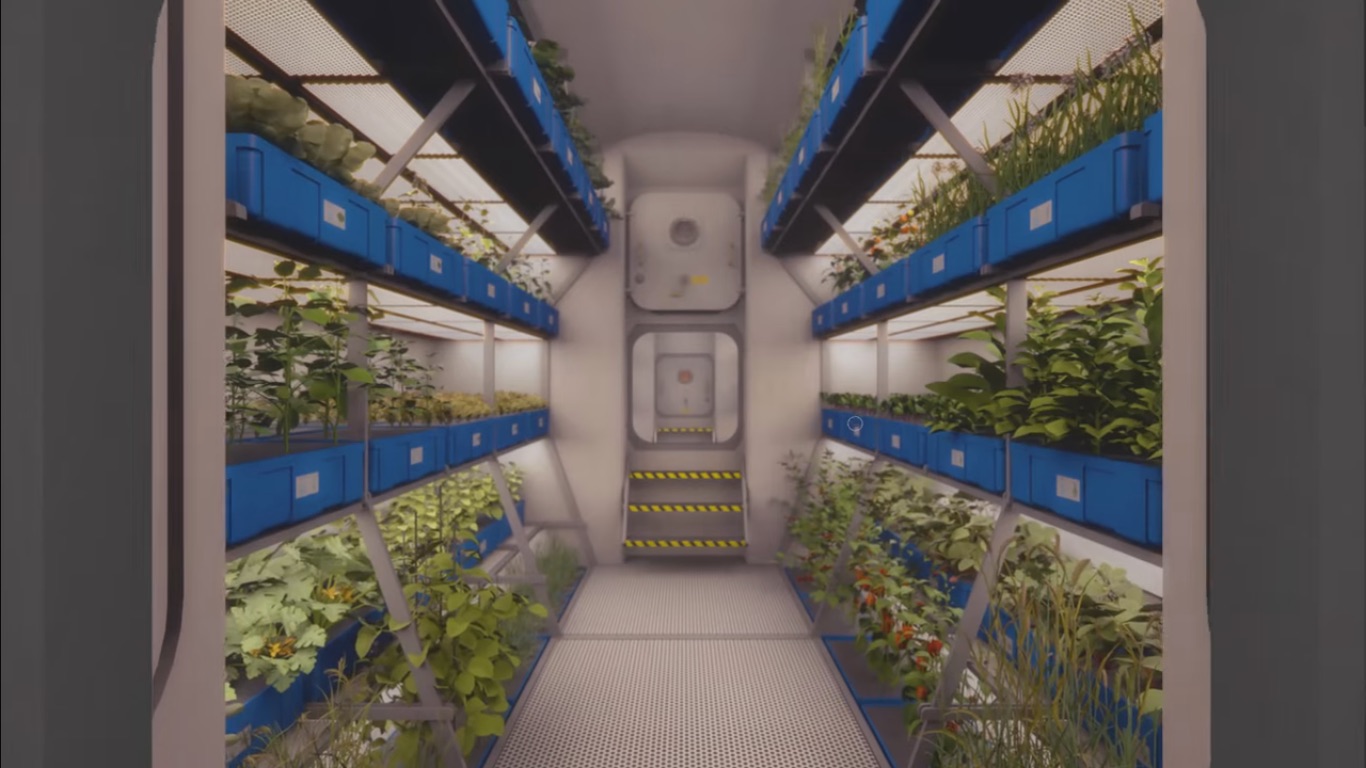
In this awesome video, NASA outlined its vision for how a Mars colony could evolve after nearly 20 years of expeditions to the Red Planet.
NASA's stated goal is to bring humans to Mars in the 2030s. The space agency has started that work by running long-duration missions on the International Space Station. The next step will be to run missions in deep space with the Orion spacecraft, which is expected to launch humans in the 2020s.
The following slideshow shows some of the ideas NASA is considering for the Mars base.
Spacecraft on Mars
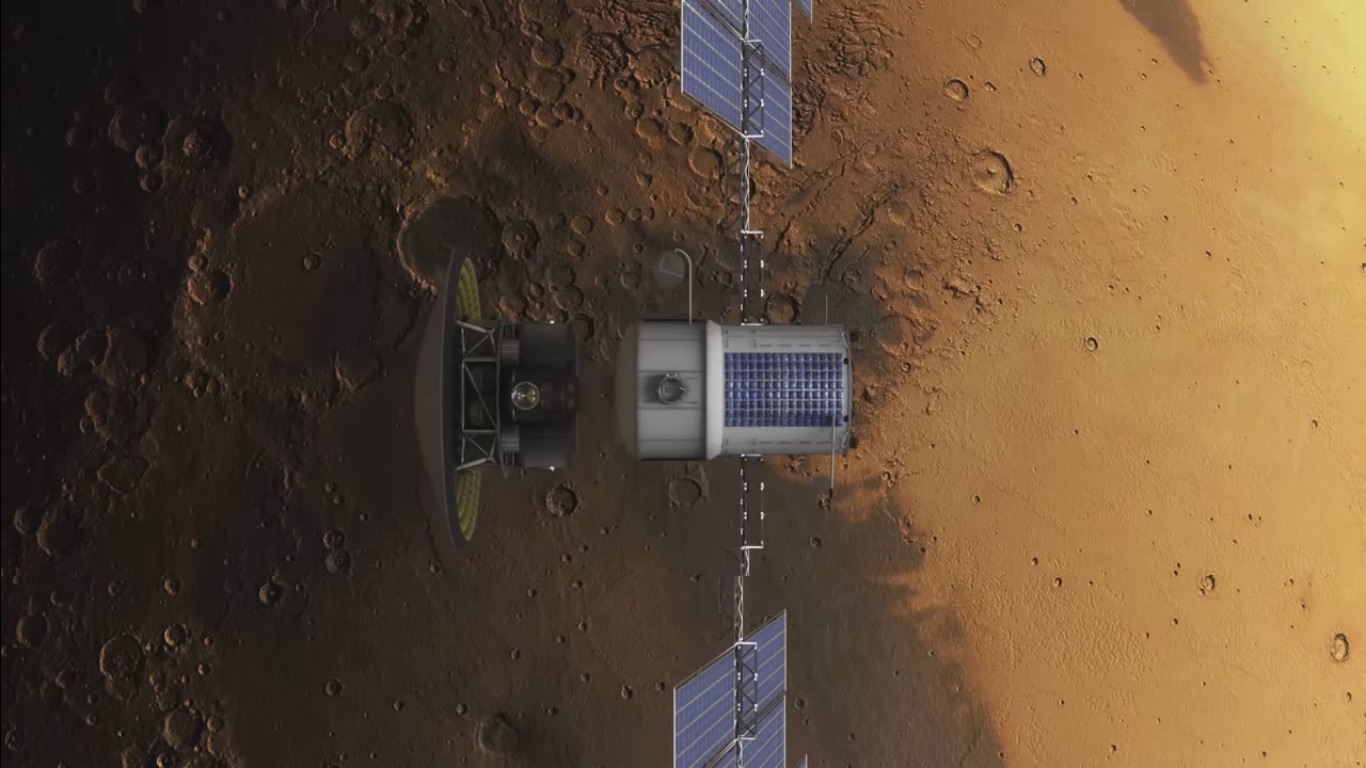
This is a spacecraft intended to bring humans to Mars. It is modeled after the Orion spacecraft that saw its first uncrewed test in 2014, when NASA launched the spacecraft into space for a high-speed return to Earth. Orion passed with flying colors and will be paired with the Space Launch System — a next-generation powerful rocket — for another uncrewed launch in 2018.
The first crewed mission of Orion was originally targeted for 2021 but will likely slip to 2023 due to technical complications in software development and other aspects, NASA stated in 2015.
The current version of the spacecraft is supposed to hold two to six people (depending on how much cargo they bring) and last about three weeks in space. A Mars spacecraft, however, would have to last long enough for the round trip — perhaps two years. Watch the full video.
Mars Crewed Lander
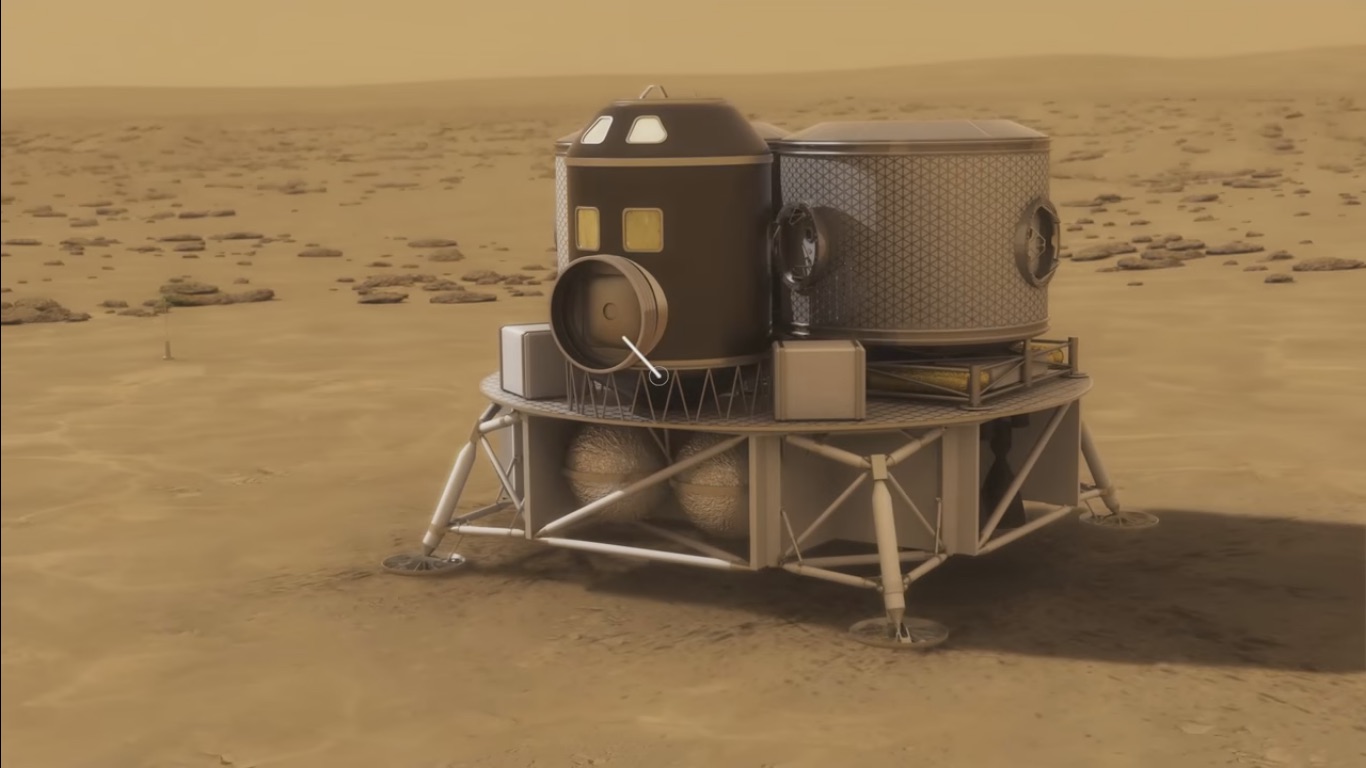
This is the Mars crewed lander. The lander must be robust enough to navigate to the surface and land safely in very light gravity. (The gravity on Mars is about one-quarter of that on Earth.) The air pressure at Mars is much less than Earth's, so one thing NASA is working on right now is figuring out how to land huge spacecraft under very large parachutes.
Get the Space.com Newsletter
Breaking space news, the latest updates on rocket launches, skywatching events and more!
One example is NASA's Low-Density Supersonic Decelerator, which tests parachutes high in Earth's atmosphere to simulate the thin atmosphere astronauts would experience at Mars. The agency also improves parachutes between missions of its Mars landers, and changes landing techniques as technology improves.
The Mars Curiosity mission, for example, used a combination of parachutes and rockets to make it down to the surface. (That sequence, never tested before, was dubbed 7 Minutes of Terror by NASA officials.) A human spacecraft would likely require an even bigger parachute.Watch the video.
Pressurized Rovers on Mars
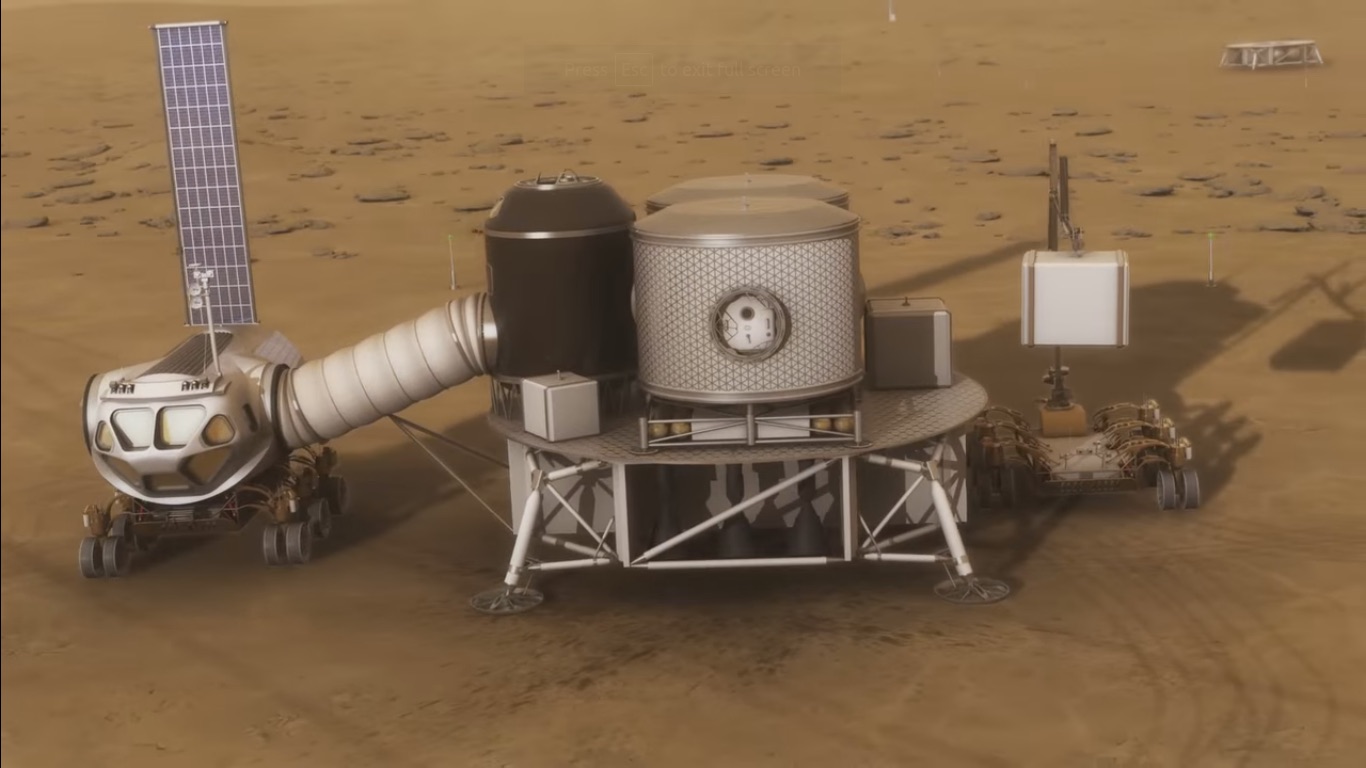
To get astronauts from place to place on Mars, NASA is hoping to offer them more comfort than the simple dune buggies Apollo astronauts had on the moon in the 1970s. Instead, the crew will work in pressurized rovers (seen at left, during a cargo transfer) that will have a greater range. It also will allow astronauts to take off their helmets while traveling (as long as the helmets are within easy reach for emergencies).
The human Mars rover is still on the drawing board, but there are a few things that NASA is trying to learn from its robotic missions. For example, the Opportunity rover has tried to climb very steep slopes on Mars. Spirit got stuck in a sand trap and eventually died in one spot. And Curiosity's wheels — different from those on Spirit and Opportunity — wore down more quickly on the tough Martian terrain.
This rover appears to be solar-powered, like the Spirit and Opportunity rovers. Mars has a variety of ground for rovers to run over, ranging from deep sand to hard rock. Explorers will need to proceed carefully and, if possible, keep NASA updated in real time as they rove across the surface.Watch the video.
Mars Ascent Vehicle Lander
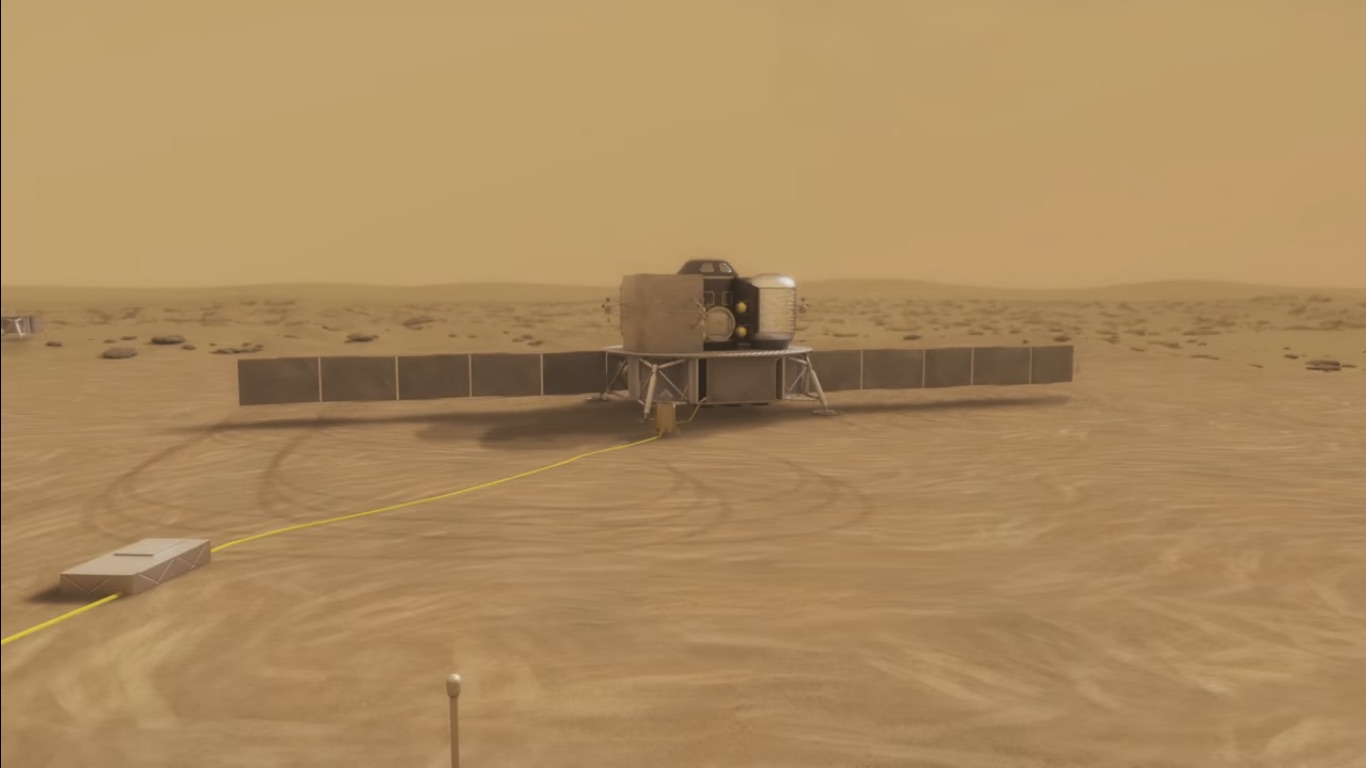
This spacecraft, called the Mars Ascent Vehicle Lander, is supposed to be the astronauts' trip home to Earth. The descent and ascent craft are different in this artist's conceptualization. This may be to save weight. During the Apollo missions on the moon, engineers constantly obsessed over how to shave pounds from the spacecraft to allow for more fuel and science experiments on board.
The ascent vehicle will need to stay healthy for the astronauts' trip on Mars, which could last anywhere from a few months to a few years. NASA is still investigating how to keep fuels safe for that amount of time on another planet. In human history, only one type of human spacecraft launched has occurred away from teams of engineers — lunar liftoffs — and those took place only a few days after landing had occurred. Watch the full video.
Solar Power Station on Mars
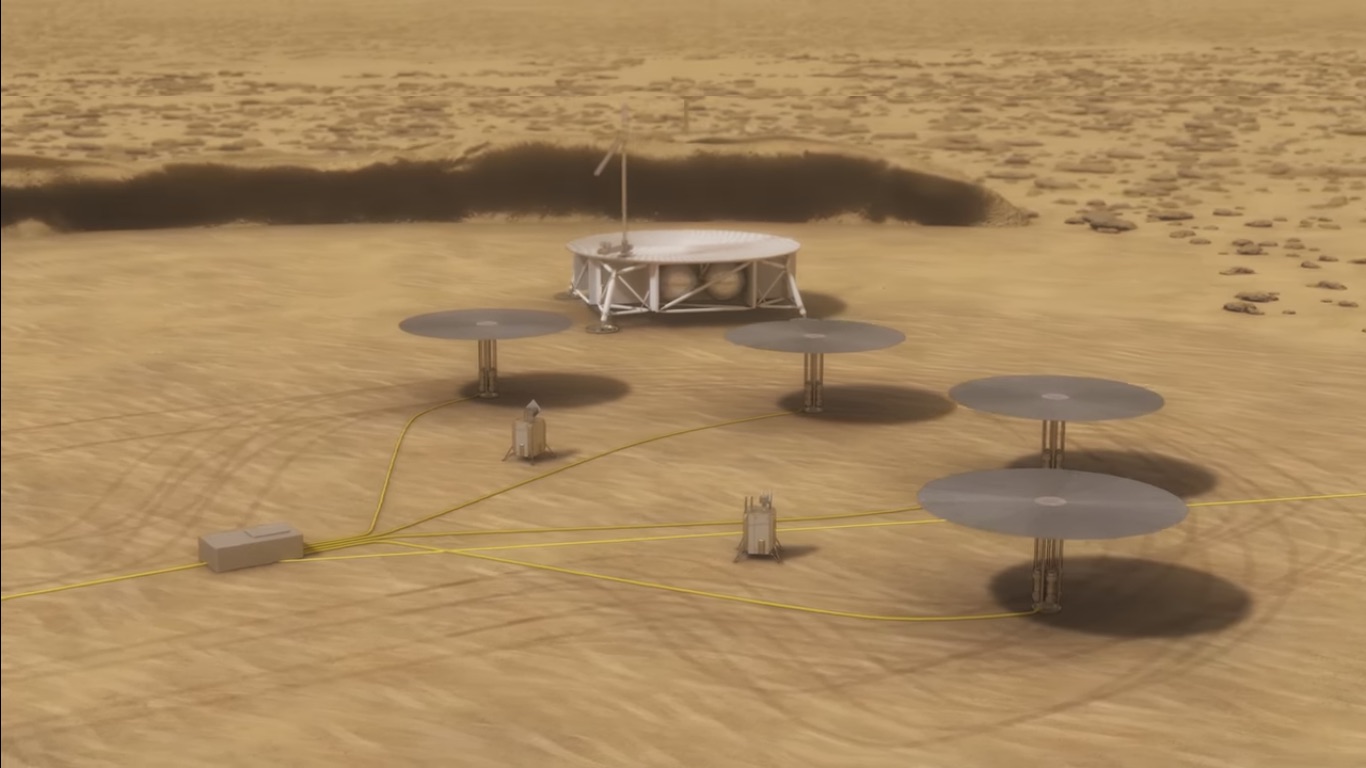
Power is the key to survival on Mars. Crews need it to cook food, to stay warm and even to breathe. Mars happens to be a very harsh environment, with strong sandstorms and deep-freezing cold nights. Designing a reliable power system to withstand all of this will be the utmost engineering challenge. Presumably, this is why the artist's conception shows multiple power systems; if one fails, others could pick up the slack until repairs take place.
One way spacecraft are powered is by radioactivity, usually in the form of nuclear fuel. This poses a threat to the astronauts because of the radiation, and this kind of power degrades over time. However, nuclear power does not require the sun's light to function.
Solar power is another option; the concept here suggests a solar power station at a distance from this set of power systems. The panels need to be large to collect sunlight, and there also must be some way to keep them clean mars-from Martian dust. Like nuclear power, the efficiency of solar panels also degrades over time. Watch the video.
Mars Propellant Production and Transportation Station
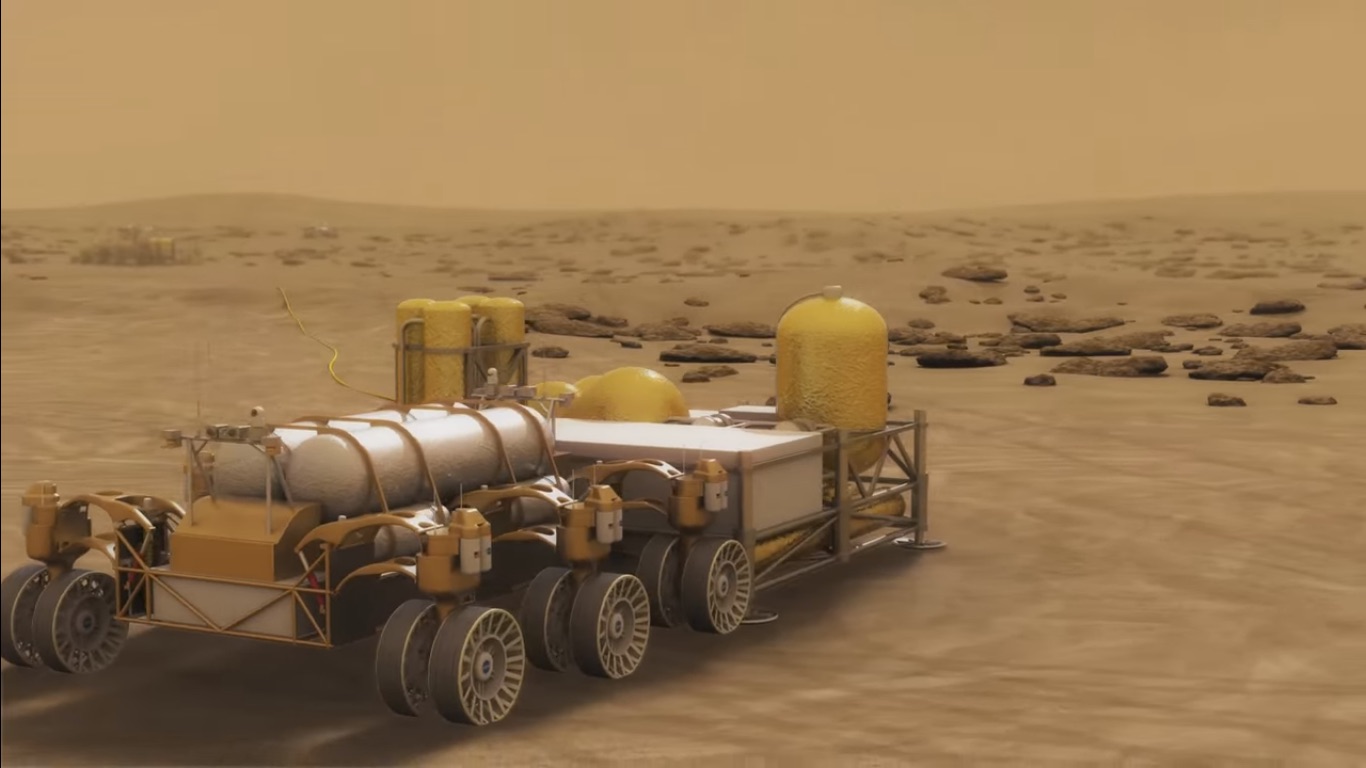
When you're living so far from home, it's efficient, where possible, to use the resources you have in place. This is called in-situ resource utilization, and means that the astronauts would do the best they could to grow their own food and use the dirt, rocks and other resources of Mars for their basic necessities.
Shown here is a propellant production and transportation station, located not far from a facility that mines regolith (Martian dust). How to create propellant is a highly experimental idea, but some thoughts could include removing certain gases from the Martian atmosphere or environment to fuel rovers and other vehicles on the surface. Watch the full video.
Martian Human Base
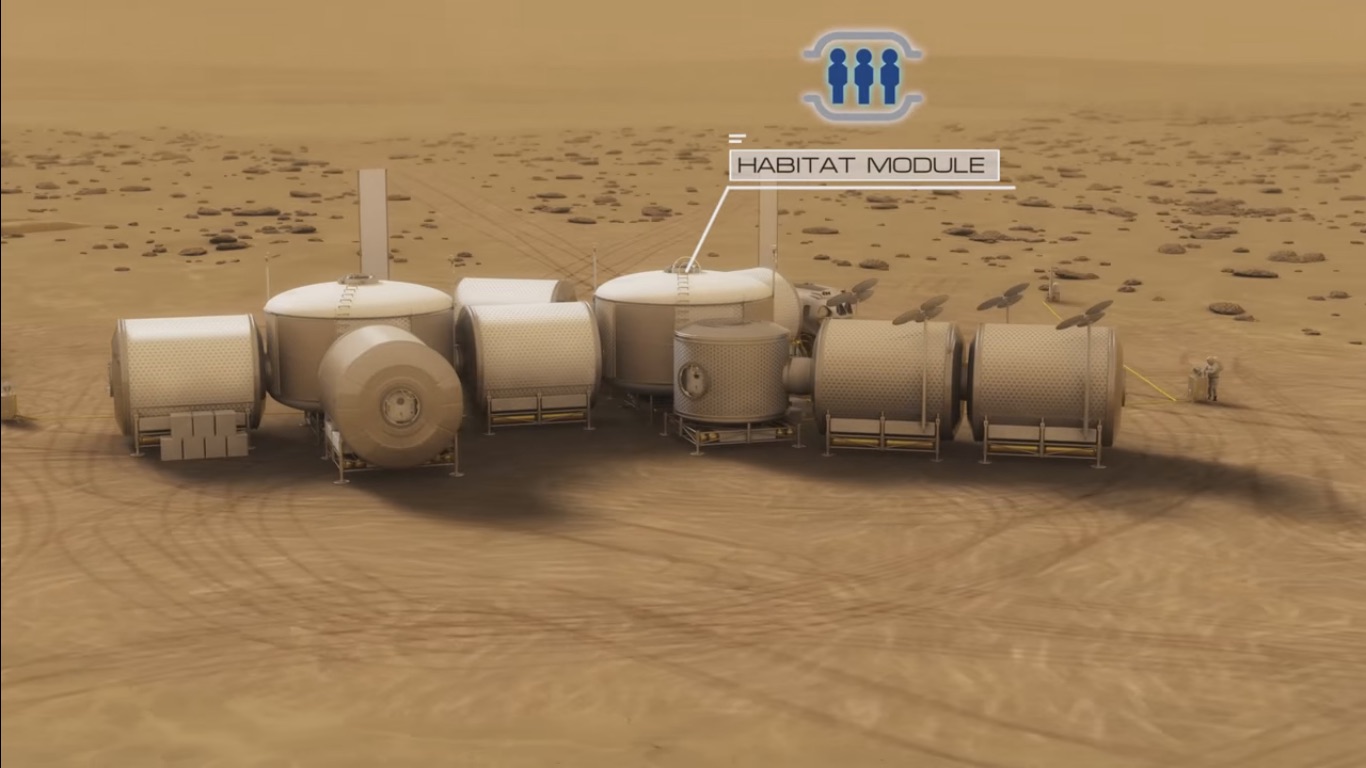
This is one concept for a Martian human base. It includes logistics modules, an astrobiology lab, a science module and a habitat module. Rovers would attach directly to the modules so that astronauts could transfer directly to the vehicles without going outside.
NASA's focus on exploration would be within about 60 miles (100 kilometers) of the landing and habitation site. This area, also known as the exploration zone, includes areas that could support humans and provide a high science return.Watch the full video.
View Inside the Mars Base
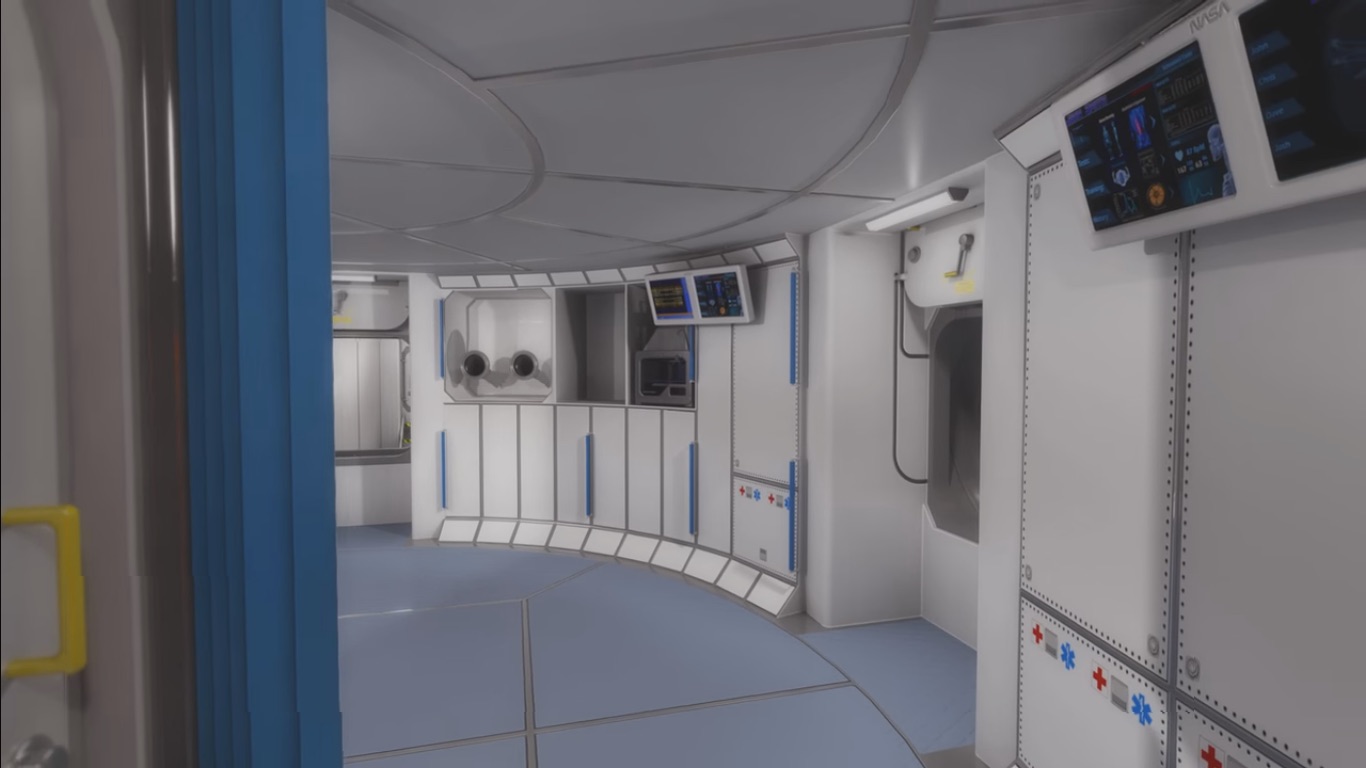
A view inside the Mars base. While mission control is a radio call away, astronauts will need to wait an average of 20 minutes for a response. This will require them to do much of the work themselves, requiring lots of training for matters such as maintenance.
The pictured facility is capable of doing several things. One option is rapid prototyping, which means manufacturing things on-site using computer-aided design (such as 3D printing). Also included is a site to analyze samples taken from the surface, and a bank of machines and systems to take care of long-term life support. Watch the full video.
Growing Food on Mars

Because food is heavy, it would be great if astronauts could grow their own plants from seeds carried into space. NASA is experimenting with this idea right now on the International Space Station with an experiment called Veggie, which has grown plants such as lettuce and zinnias. (Potato growing is also featured prominently in the movie "The Martian.")
There are still some unanswered questions about growing plants in space, such as how long the system is sustainable and how they will affect the life-support systems that are supposed to be keeping astronauts alive.Watch the full video.
NASA Z-2 Spacesuit
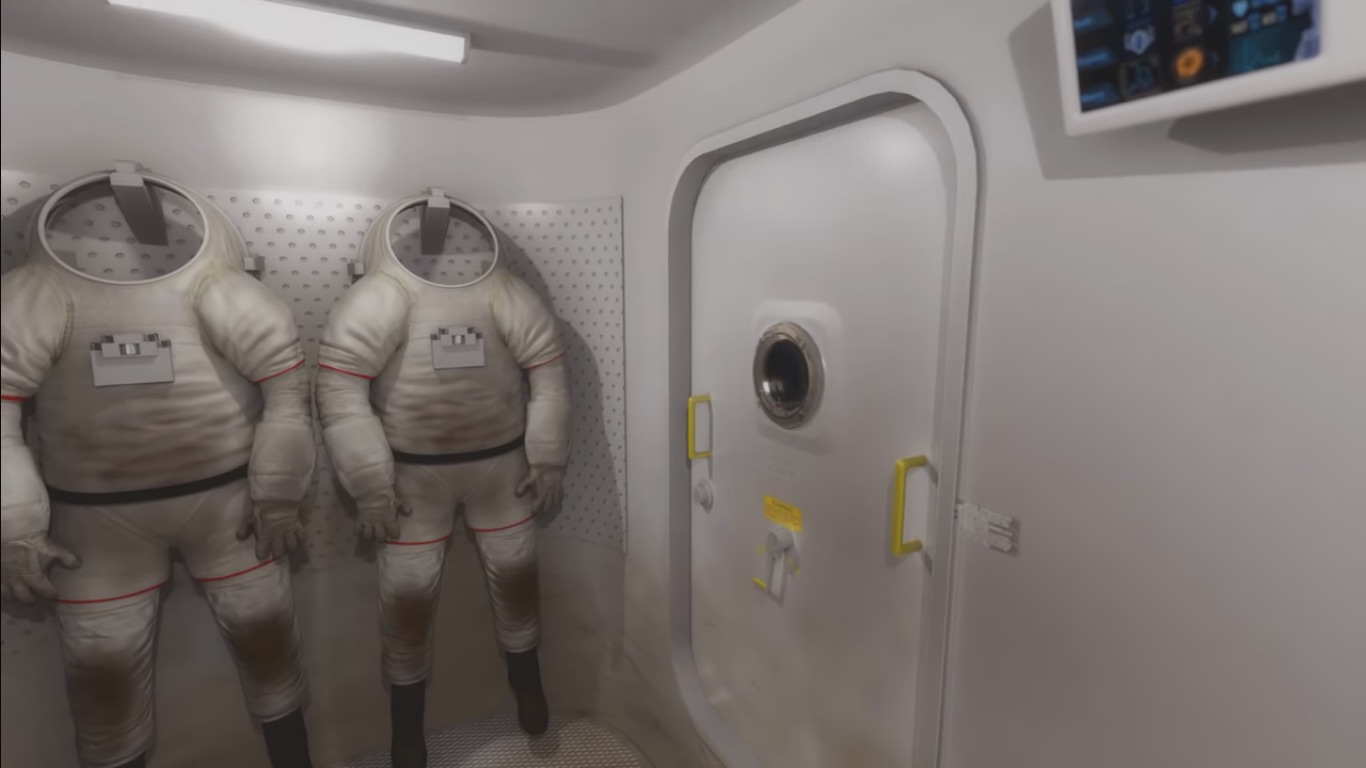
It's not much fun going all the way to Mars without getting the chance to go outside. Spacesuits are necessary for so many things. They allow astronauts to maintain the station or fix it if something goes wrong. They also let astronauts do science experiments on the surface or build new modules or pieces of equipment.
NASA's current generation of spacesuits are designed for microgravity, making them perfect for the International Space Station. But the agency will require flexible spacesuits that are good for moving around in the partial gravity of Mars. NASA is trying to improve on Apollo technology by creating the Z-2 spacesuit, with greater mobility in the joints and a rear-entry port that will allow astronauts to climb into the suit with minimal assistance. Watch the full video.
Join our Space Forums to keep talking space on the latest missions, night sky and more! And if you have a news tip, correction or comment, let us know at: community@space.com.

Elizabeth Howell (she/her), Ph.D., was a staff writer in the spaceflight channel between 2022 and 2024 specializing in Canadian space news. She was contributing writer for Space.com for 10 years from 2012 to 2024. Elizabeth's reporting includes multiple exclusives with the White House, leading world coverage about a lost-and-found space tomato on the International Space Station, witnessing five human spaceflight launches on two continents, flying parabolic, working inside a spacesuit, and participating in a simulated Mars mission. Her latest book, "Why Am I Taller?" (ECW Press, 2022) is co-written with astronaut Dave Williams.









